The word Agulhas means different things to different people. To a geographer, Cape Agulhas is the most southern tip of the continent of Africa. Many people would think that Cape Horn is furthest south, particularly with its fame among the trading sailors of the 19th century who “Rounded the Horn” on their way to India and the Far East. Presumably, as these vessels navigated around the southern point of Africa the biggest change of direction was when they changed course around Cape Horn, whereas the change of course just 80 miles later, around Cape Agulhas, was a relatively modest change of angle, prior to the ships running almost due east along what is now the Garden Coast of South Africa.
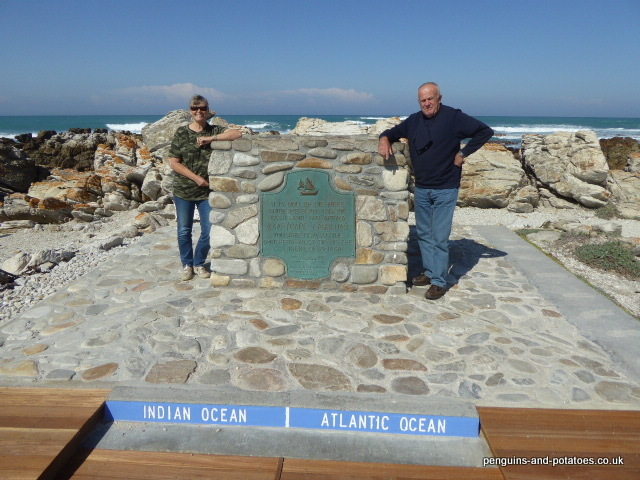
Oceanographers will also know the name Agulhas after the Agulhas Current. This is a major south-flowing current which runs down the east coast of Africa, roughly from 27o to 40o south. It is a narrow strip of current close to the shore, varying between 30 and 100 km wide, and travelling at speeds averaging around 2 km/hr but at its maximum reaching speeds of 9.3 km/hr.
The Agulhas that is connected to Tristan da Cunha is SA Agulhas ll, which is a ship that is well known on a global basis. The Agulhas is a South African icebreaking polar supply and research ship that is used as a platform for a wide range of tasks in the southern polar regions. The Agulhas is owned by the Department for Environmental Affairs, and is operated by SANAP (South African National Antarctic Programme). The link with Tristan is that every year the Agulhas passes from Cape Town to Tristan da Cunha, then she goes down to Gough Island 220 miles south of Tristan, where she carries out the change of the staff that are based on Gough for a year, dropping off one annual team and picking up the retiring team after their handover. The Agulhas then returns to Tristan, and onwards to Cape Town.
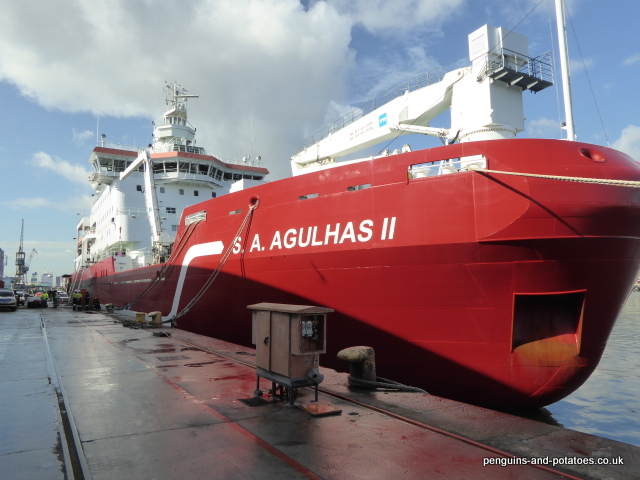
On her way from Cape Town to Tristan the Agulhas takes a large quantity of cargo, and many passengers. Last September the passengers included the RSPB team travelling out to Gough to do work on the mouse eradication project, two new teachers coming to Tristan, a number of islanders returning to the island from medical visits in Cape Town, a number of scientists coming to work on fisheries, birds and seals, a retail specialist coming to help the Tristan supermarket for six months, a large number of visitors coming to celebrate the 100th birthday of their relative on the island – and Bee and myself returning from leave!
The Agulhas has some big advantages for travelling out here compared with the deep sea fishing boats that are the other form of transport. Firstly, she carries two helicopters. One of the helicopters is used to take passengers ashore, which can be done even if sea conditions are stormy; thus there is virtually no risk of having to wait days on end while sea conditions allow the harbour on Tristan to be used. The next advantage is that the Agulhas is a large and powerful ship, and is able to stick to a schedule under almost any conditions. Visitors to the island are able to come ashore, and to have great confidence that they will be picked up 18 days later when the ship is on her return voyage. The third advantage over the fishing ships is to do with passenger comforts – the Agulhas has stabilisers, comfortable en-suite cabins, good food, and good facilities including a gym and a couple of bars!
The Agulhas was built in Finland, and was commissioned in 2012. She is built to “Polar Class 5” and is powered by four 3,000kw Waitsila engines. Her ice-breaking capability is impressive, with a capacity to drive through 1 metre of ice at 5 knots. An interesting feature is that her decks are heated, in order to prevent any build-up of ice in polar conditions. The ship’s stabilisers are interesting – being an ice-breaker she cannot have stabiliser vanes sticking out of the side of the vessel, instead she has water balancing tanks which are joined by massive pumps, capable of pumping water from one side to the other in order to achieve a balanced trim.
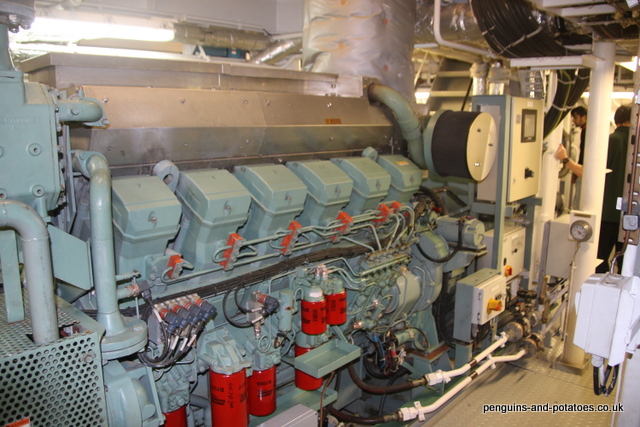
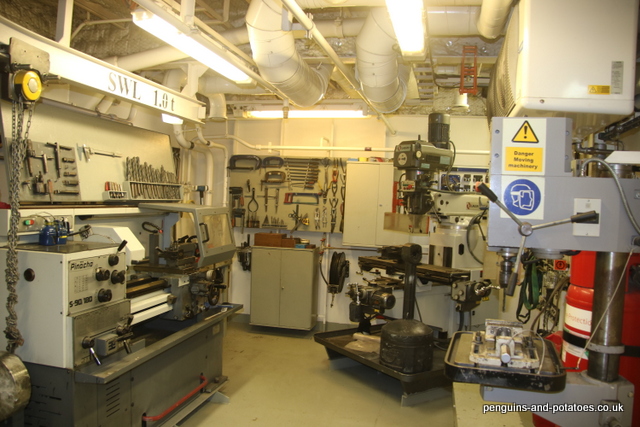
The ship has a crew of 45, and accommodation for a further 100 passengers. With regard to her function as a scientific platform, the ship has 8 fitted laboratories and 6 further container laboratories, a library, as well as an auditorium for 100 people.
Our crossing from Cape Town to Tristan was trouble-free, and we made it interesting since I managed to organise visits to the engine room and to the bridge. On the bridge we found the famous xylophone that is used as a dinner gong – it is a tradition on board that a crew member on the bridge announces meal times by playing a tune over the public address system!
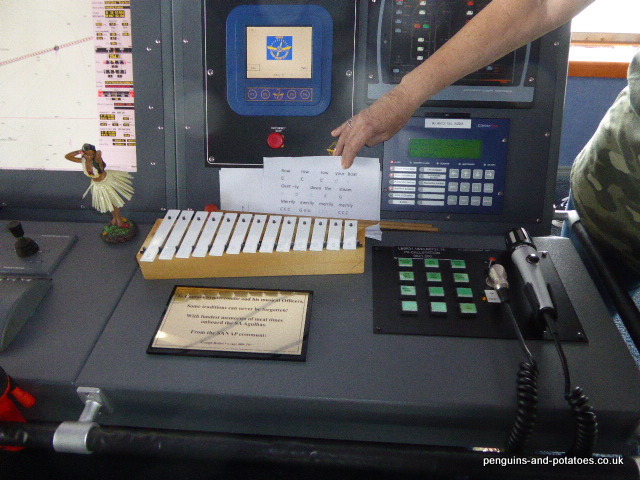
The Agulhas regularly carries out expeditions in the southern polar regions. One quite recent expedition, in February this year, was to go down into the Weddell Sea and carry out scientific studies, particularly on the giant iceberg known as A68, leading to greatly increased knowledge of the climatic influences from that area. One last mission, before the Agulhas left the Weddell Sea, was to launch an AUV (Autonomous Underwater Vehicle) in order to search for the Endurance, Sir Earnest Shackleton’s famous ship which sank in November 1915. The mission was not a success – they were on station and began their search on 11 February, but on 14 February, with deteriorating weather and sea ice conditions, the AUV lost contact with her mother ship and the mission had to be called off and the AUV abandoned.


